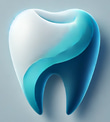Signs of Gum Disease
When to see your dentist
4/27/20252 min read


Gum disease, also known as periodontal disease, is a common yet often overlooked condition that affects millions of people. Left untreated, it can lead to serious oral health issues, including tooth loss and systemic health complications. Recognizing the early signs of gum disease and seeking prompt treatment can help prevent long-term damage. Here’s what you need to know.
Gum disease develops gradually, often beginning with mild symptoms that can be easy to ignore. However, early detection is key to preventing more severe problems. Be on the lookout for these common signs:
1. Red, Swollen, or Tender Gums
Healthy gums should be firm and pale pink. If your gums appear red, puffy, or feel tender to the touch, it may be an early sign of gingivitis, the first stage of gum disease.
2. Bleeding Gums
Do your gums bleed when you brush or floss? Occasional bleeding may not seem alarming, but frequent bleeding is a sign of inflammation and potential infection.
3. Persistent Bad Breath (Halitosis)
Bad breath that doesn’t improve with brushing, flossing, or mouthwash could indicate bacterial buildup in the gums.
4. Receding Gums
Gums that are pulling away from your teeth, making them appear longer, can be a sign of advancing gum disease. This can lead to sensitivity and an increased risk of tooth loss.
5. Sensitive Teeth
Increased sensitivity to hot, cold, or sweet foods may result from exposed tooth roots caused by gum recession.
6. Loose or Shifting Teeth
Advanced gum disease can weaken the supporting structures of your teeth, leading to mobility or noticeable shifts in tooth alignment.
7. Pus Between Teeth and Gums
The presence of pus or an abscess in your gums indicates an infection that requires immediate dental attention.
When to See Your Dentist
If you experience any of the above symptoms, schedule an appointment with your dentist as soon as possible. Even if your symptoms seem mild, early intervention can prevent more serious complications.
Additionally, you should visit your dentist regularly for routine cleanings and checkups, as gum disease can sometimes progress without noticeable symptoms. Most dental professionals recommend a checkup every six months, but if you have a history of gum disease, you may need more frequent visits.
Treatment Options for Gum Disease
The treatment for gum disease depends on its severity:
- Gingivitis (early-stage gum disease) can often be reversed with professional cleanings and improved oral hygiene.
- Periodontitis (advanced gum disease) may require deep cleaning procedures like scaling and root planing, antibiotics, or, in severe cases, surgical interventions.
Preventing Gum Disease
The best way to avoid gum disease is through good oral hygiene and healthy habits:
- Brush your teeth twice a day with fluoride toothpaste.
- Floss daily to remove plaque and debris between teeth.
- Use an antibacterial mouthwash to help reduce plaque buildup.
- Maintain a healthy diet and limit sugary foods and drinks.
- Avoid smoking, as it significantly increases the risk of gum disease.
- Schedule regular dental checkups and cleanings.
Gum disease is a serious condition that can have long-term effects on your oral and overall health. Recognizing the early warning signs and seeking timely treatment can save your gums and teeth from irreversible damage. If you notice any symptoms, don’t delay—schedule a visit with your dentist to protect your smile and maintain your health.
